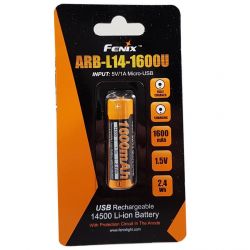FAQ
TL;DR: On the NC1000 Plus, NiMH AAs charge correctly: nominal is 1.2 V. "Ni-Mh batteries have a working / average voltage of 1.2V." Confirm by running a charge–discharge capacity test instead of judging by voltage. [Elektroda, pietia86, post #17165096]
Why it matters: This helps NC1000 Plus owners fix “not fully charged” worries and pick cells their keyboards/remotes read correctly.
Quick Facts
- NiMH AA/AAA nominal voltage is 1.2 V by design; many devices expect 1.5 V alkalines. [Elektroda, viaxa, post #17165091]
- Reported post‑charge readings: about 1.38–1.43 V on the charger and ~1.38 V by multimeter. [Elektroda, viper111, post #17164911]
- Ni‑Zn rechargeables are 1.6 V; about 600 mAh (AAA) and 1500 mAh (AA); need a charger up to ~1.9 V. [Elektroda, rogos87, post #17168776]
- Primary lithium AA cells deliver ~2900 mAh at 10–50 mA and suit low‑drain gear best. [Elektroda, bestboy21, post #17170199]
- 1.5 V Li‑ion AAs use a DC‑DC converter, increasing self‑discharge; poor for ultra‑low‑current receivers. [Elektroda, pietia86, post #17170160]
Why do my �fully charged� NiMH AAs not read 1.5 V on the NC1000 Plus?
NiMH cells are 1.2 V devices, not 1.5 V like alkalines. After charging stops, their voltage settles to a lower resting level. That drop is normal and does not mean undercharging. Some devices misread 1.2 V chemistry as “low.” Verify health by measuring discharged capacity in the charger’s test mode. "Remember that Ni-Mh batteries have a working / average voltage of 1.2V." [Elektroda, pietia86, post #17165096]
Will my wireless keyboard misread NiMH and show �low battery�?
Yes. Some manufacturers either declare NiMH support or avoid any promises about it. If they don’t, devices may show incorrect levels with 1.2 V cells. For long runtimes at low current, primary batteries can be a better choice. NiMH also self‑discharge over weeks when idle. [Elektroda, JacekCz, post #17165326]
How do I test if my NC1000 Plus fully charges my cells?
Do a capacity test in the charger, not just a voltage check.
- Fully charge the cells in the NC1000 Plus.
- Run a controlled discharge with capacity measurement.
- Compare measured mAh to the cell’s rating to confirm full charge.
"Perform the discharge with the measurement of capacity." [Elektroda, pietia86, post #17165096]
Are there 1.5 V rechargeable AAs I can use instead of NiMH?
NiMH are 1.2 V by definition, so not 1.5 V. Nickel‑zinc rechargeables exist at about 1.6 V. Expect lower capacities, around 600 mAh (AAA) and 1500 mAh (AA). They also demand a dedicated charger because charge termination reaches about 1.9 V. [Elektroda, rogos87, post #17168776]
Are 1.5 V USB‑rechargeable lithium AAs (e.g., Fenix ARB‑L14‑1600u) good for keyboards?
They are Li‑ion cells with an internal converter that outputs 1.5 V. That converter draws quiescent power, so ultra‑low‑drain receivers can fare worse. Price is also higher than NiMH. "There must be a converter there." Consider primary batteries for keyboards if runtime matters more than rechargeability. [Elektroda, pietia86, post #17170160]
For low‑drain devices, which primary AA is better: alkaline or lithium?
Choose primary lithium AA for low‑current loads. At 10–50 mA, they deliver about 2900 mAh. "Lithium cells (not to be confused with LiIon) are best for equipment with low power consumption." Quality alkalines work, but offer less capacity at those currents. [Elektroda, bestboy21, post #17170199]
Which rechargeable NiMH work well in low‑current devices?
Low‑current applications often do best with low‑self‑discharge NiMH. Sanyo/Panasonic Eneloop are a proven option. Users report stable performance for remotes and similar gear. Still, check your device’s manual for NiMH acceptance. [Elektroda, pietia86, post #17165328]
Can I set different charge currents per slot on the NC1000 Plus?
Yes. On the NC‑1000, the current you choose is not tied to previously inserted cells. By contrast, BC‑series units limit current to the value set for the first battery. If behavior seems linked, reinsert cells and reselect per‑slot settings. [Elektroda, emiterek, post #17708650]
My NC1000 Plus won�t power on�what should I check first?
Remove all cells. Try a known‑good wall outlet and the supplied power adapter. Reinsert one cell and see if the display wakes. If it stays dark, contact service. Per‑slot behavior and settings do not prevent power‑up on this model. [Elektroda, emiterek, post #17708650]
Do Ni‑Zn rechargeables have downsides compared with NiMH?
Yes. Their capacity is smaller: about 600 mAh for AAA and 1500 mAh for AA. Many brands print mWh to appear higher on labels. Factor this into runtime expectations if you switch chemistries. [Elektroda, rogos87, post #17735120]
Are there true 1.5 V NiMH AAs?
No. NiMH cells are 1.2 V by definition of their chemistry, not 1.5 V. [Elektroda, Wojtek(KeFir), post #17168304]
What other rechargeable chemistries exist, and do they need different chargers?
Other chemistries have different voltages and charging systems. Before switching, confirm size, use profile, and required charger type. Using the wrong charger can damage cells or devices. Search a battery list to compare options and constraints. [Elektroda, Wojtek(KeFir), post #17168368]
Why do NiMH seem to go flat in storage?
They self‑discharge, even unused. "NiMh battery even without power consumption has self‑discharge measured in a few weeks." For long idle periods, primary alkaline or lithium cells can last months to years. This is an edge case for very low‑power gadgets. [Elektroda, JacekCz, post #17165326]



